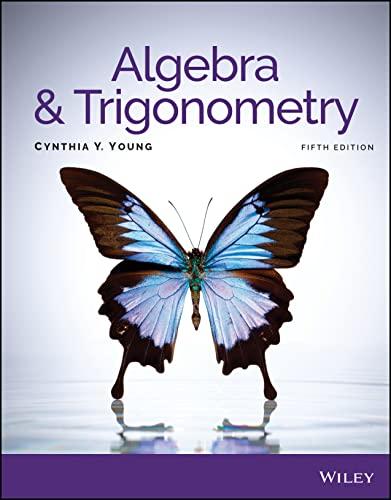Question
What methods did we employ in this experiment? On each trial, you were given a brief description of a person, and then asked to judge
What methods did we employ in this experiment?
On each trial, you were given a brief description of a person, and then asked to judge the probability that the person has a particular job or hobby. There were two independent variables: whether the person's occupation had high or low typicality, and whether there was one or two activities. These independent variables were crossed with each other, so there were four conditions. The dependent variable is the rating.
There are two expected effects, one that is consistent with the formal properties of probability and one that is inconsistent with the formal properties of probability.
The first property is that you should give higher probability ratings for highly typical events than for low typical events. This property should hold true regardless of the number of activities. The activities for the experiment were previously rated in other studies to insure this property. Demonstrating this difference for typicality simply reflects how people view these statements for the given descriptions, and this effect is consistent with general rules of probability.
The second property is aconjunction fallacy, which is inconsistent with the formal rules of probability. If you behave like participants in similar studies, you will give higher probabilities for the trials with two activities than for trials with one activity. This result is contrary to a fundamental property of probability because placing more constraints on an outcome always leads to lower probability.
For example, if you randomly draw a card from a standard deck, it is more probable that you will draw a Queen than that you will draw a red Queen. For the former case, there are four Queens in the deck, so the probability is 4 out of 52, or approximately 0.077. For the latter case, there are two red Queens in the deck, so the probability is 2 out of 52, or approximately 0.038.
Similarly, regardless of the opening description, it must be more probable that "Bob bets on horse racing" than that "Bob bets on horse racing and rides a motorcycle," because the latter statement is more specific than the former statement.
It should be pointed out that in this experiment, you did not directly compare one-activity and two-activity statements that had common activities or person description. However, the statements in the experiment were chosen so that people tend to give similar ratings to the different trials that have a similar type of statement. Moreover, the class average data will include ratings from other students who saw similar descriptions but different statements. The average effect will likely be similar to your individual data.
This lab does not include a statistical analysis of the data because the intention is to highlight a property of how people think about probabilities. The questions below simply ask you to compute the mean for each of the trial types. It is important to recognize that many intuitions you may have about probabilities can mislead you when thinking about statistical issues.
Mean rating for low typicality and one activity:
(The difference between your answer and the correct value must be less than 0.01.)
Mean rating for low typicality and two activities:
(The difference between your answer and the correct value must be less than 0.01.)
Mean rating for high typicality and one activity:
(The difference between your answer and the correct value must be less than 0.01.)
Mean rating for high typicality and two activities:
(The difference between your answer and the correct value must be less than 0.01.)
Trial Typicality of statement Number of activities Probability rating of statement
1 High 2.0 0.81
2 High 1.0 0.97
3 Low 1.0 0.13
4 High 1.0 0.74
5 Low 2.0 0.87
6 Low 1.0 0.66
7 Low 2.0 0.57
8 Low 1.0 0.08
9 Low 2.0 0.26
10 High 2.0 0.75
11 High 1.0 0.76
12 High 2.0 0.77
Step by Step Solution
There are 3 Steps involved in it
Step: 1

Get Instant Access to Expert-Tailored Solutions
See step-by-step solutions with expert insights and AI powered tools for academic success
Step: 2

Step: 3

Ace Your Homework with AI
Get the answers you need in no time with our AI-driven, step-by-step assistance
Get Started


